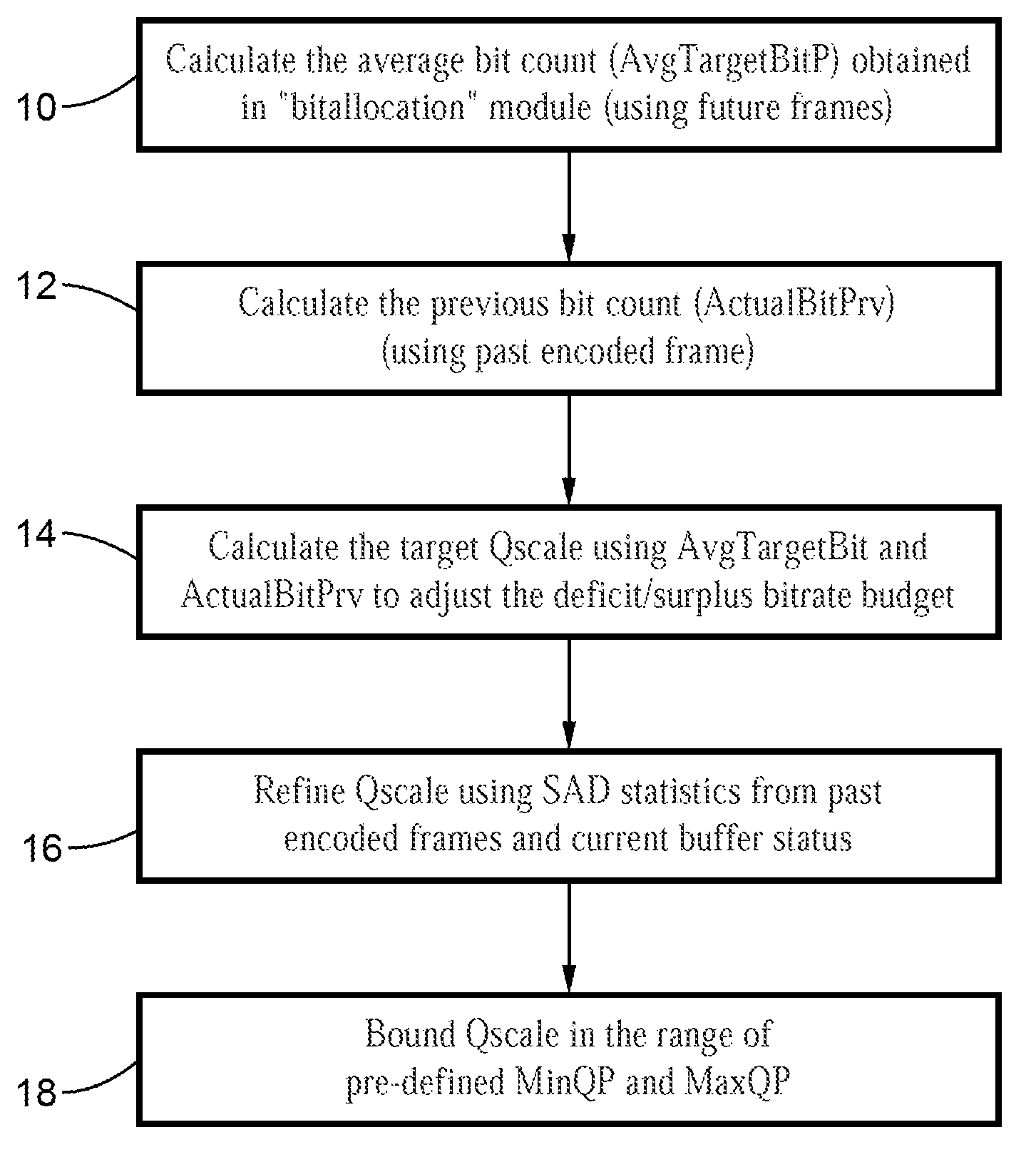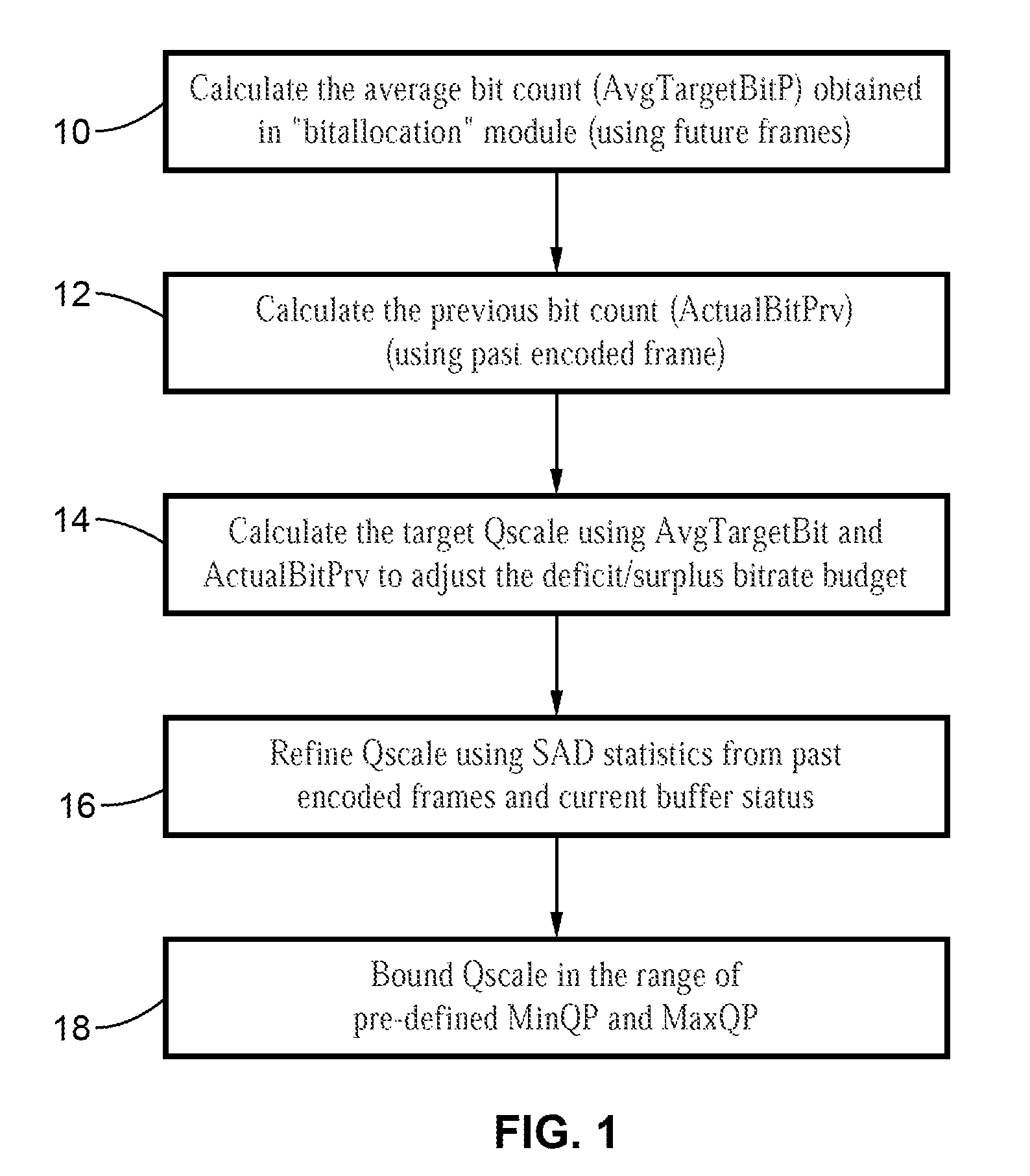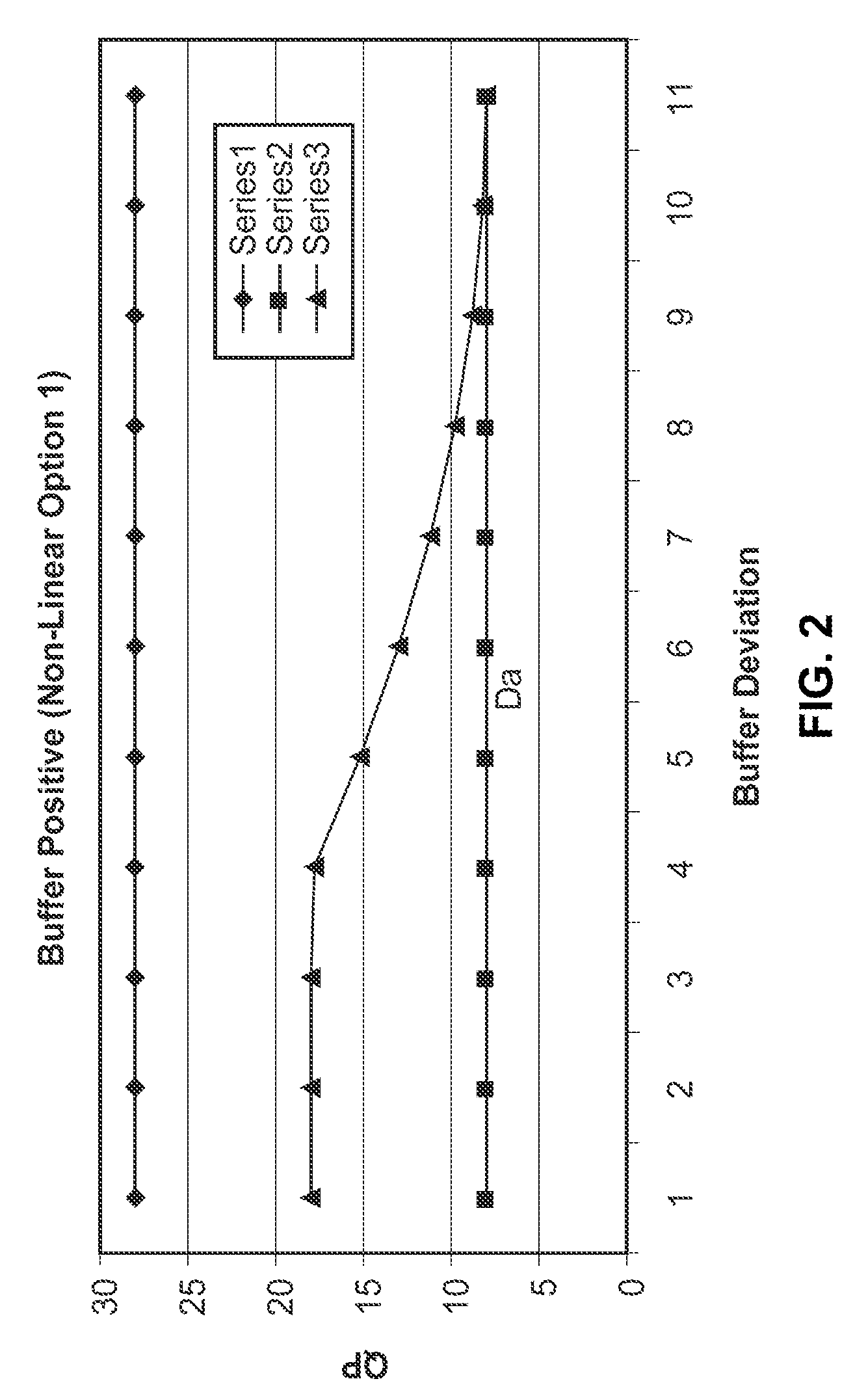Scalable MPEG video/macro block rate control
a macro block and layer rate control technology, applied in the field of video coding and decoding techniques, can solve problems such as poor viewing quality, and achieve the effect of easy derivation of quantization parameter (qp) estimation valu
- Summary
- Abstract
- Description
- Claims
- Application Information
AI Technical Summary
Benefits of technology
Problems solved by technology
Method used
Image
Examples
case 1
[0137] Scene Change I Slice or the First I Slice given no retry encoding:[0138]MadIntensity=(MbMad[iMbNum]+1) / (MbAvgMad+1);[0139]AdIntensity=(MbInterAdCur+1) / (EstMbAvgAd+1);
[0140]Where EstMbAvgAd=(m_iMbAvgMad+1) / MAD_DIV_AD_PER_PIXEL, and MAD_DIV_AD_PER_PIXEL=1.5 in this implementation based on the empirical values in Tables 4 and 5 which show the MAD and AD value in the selected sequences, and their relation.
[0141]Next, the index is calculated, T1, representing coding (i.e., Ad) activity, and limit T1 in + / −LocalAdjRange that is calculated in step 4 of section 3.2 to avoid large fluctuations.
T1=MadIntensity / AdIntensity
[0142]These indexes provide a measure of the intensity of Mad versus Ad. The basic empirical observation is to assume that if T1 equals to 1, meaning that Ad and Mad both are in average level, the Qp level should be kept at the Pic target Qp. If T1 is greater than 1, meaning the content of this MB is pretty busy (above average), its coding complexity (AD) is below aver...
case 2
[0147] Regular I-Frame(Slice). In addition to the above similar calculations for Case 1, an additional index T2 is needed. The new intensity calculations are listed below:[0148]DistIntensity=(MbDistortionMap[iMbNum]+IntensityBase) / (MbAvgDistortion+IntensityBase)[0149]MadIntensity=(MbMad[iMbNum]+IntensityBase) / (MbAvgMad+IntensityBase)[0150]AdIntensity=(MbInterAdCur+IntensityBase) / (MbAvgAd+IntensityBase);[0151]where IntensityBase is derived in step 3 of section 3.2.
[0152]Next, indices, T1, and T2, are calculated which represent coding (i.e., Ad) activity and Distortion versus Mad, and limit T1 and T2 in + / −LocalAdjRange calculated in step 4 of section 3.2 to avoid large fluctuations.
T1 = MadIntensity / AdIntensity T2 = MadIntensity / DistIntensityThen, If (MadIntensity T1 = MIN(T1, MadIntensity) T2 = MIN(T2, MadIntensity) } else { T1 = MAX(T1, MadIntensity) T2 = MAX(T2, MadIntensity) }
[0153]Then limiting T1 and T2:
/ / coding intensityT1 = limit(1−LocalAdjRange, T1, ...
PUM
 Login to View More
Login to View More Abstract
Description
Claims
Application Information
 Login to View More
Login to View More - R&D
- Intellectual Property
- Life Sciences
- Materials
- Tech Scout
- Unparalleled Data Quality
- Higher Quality Content
- 60% Fewer Hallucinations
Browse by: Latest US Patents, China's latest patents, Technical Efficacy Thesaurus, Application Domain, Technology Topic, Popular Technical Reports.
© 2025 PatSnap. All rights reserved.Legal|Privacy policy|Modern Slavery Act Transparency Statement|Sitemap|About US| Contact US: help@patsnap.com



